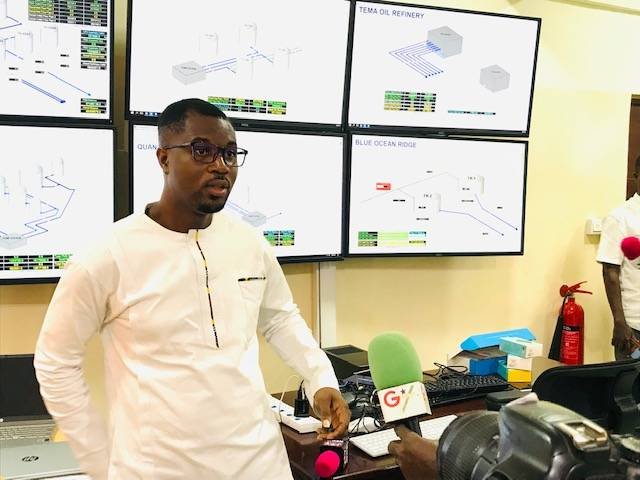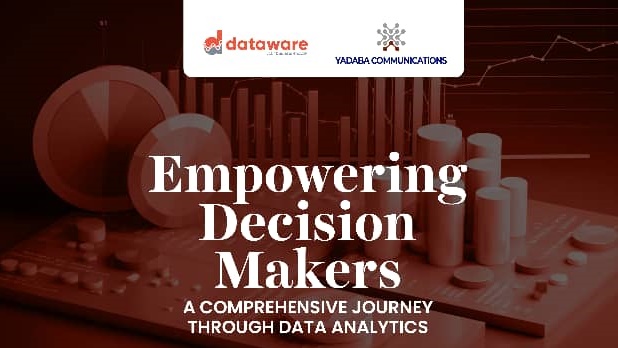
By Bernard BEMPONG
The importance of data quality and the need for auditors to ensure that the data they use is accurate and reliable cannot be overemphasized. Indeed, the advent of modern technology has added a new impetus to dataset for audit purposes so much that, one can say, we are in the era of big data.
That said, big data is a complex dataset that is obtained from large, disparate and often external data sources and usually beyond the capacities of traditional data-processing systems. Generally, big data holistically considers data which is structured (human-generated) as well as unstructured (machine-generated).
A structured data is organized in a standard format and traditionally stored in an organization’s databases or files. A structured data is easier to control because it is internally generated from established sources in a company.
Unstructured data, on the other hand, is technology-driven and takes the form of texts, emails, images, legacy formats or audio-visual resources. Indeed, unstructured data is typically more difficult to manage due to its evolving and unpredictable nature. Indeed, the use of unstructured data to augment audit evidence is growing and becoming more relevant in managing business risks.
Big Data as Audit Evidence
Audit judgements used to rely solely on evidence obtained from structured datasets in an organization’s financial records. But technological advances in data storage, processing power and analytic tools have made it easier to obtain unstructured data to support audit evidence.
As a result, big data analytics can be used to gather audit evidence from datasets and other sources that encompass organizations (e.g. transaction data, customer data), industries (e.g. economic data), nature (e.g. weather, seismic data, locations and maps), internet clicks, social media, market research and numerous other sources. Indeed, a sufficient big data from an appropriate source provides an assurance of reliability and use as audit evidence. That said, big data analytics transforms the audit process in the following ways:
- It allows auditors to identify high-risk areas and focus their efforts on those areas.
- It enables auditors to identify patterns and anomalies in large datasets.
- It can improve audit quality and reduce the risk of material misstatements.
Big data is considered a real-time audit evidence based on its nature and set of characteristics in respect of volume (the amount of data being created is vast and counted in hundreds of gigabytes, terabytes or even petabytes as compared to traditional data sources ), veracity (data can be verified for its accuracy and context). Some other generic features necessitating the relevance of big data include:
- Variety: This involves dealing with diverse data formats, structures and sources.
- Velocity: Data can be generated extremely quickly and continuously.
- Variability: Big data is extremely variable and always changing.
- Data Visualization: Complex data to be presented in a clear and concise manner with graphs or graphics and charts that are easy to understand by auditors.
- Value is generated by extracting insights and meaningful information for audit purposes.
- Continuous Monitoring allows for real-time monitoring of data for continuous audit and assurance.
- Data Governance by ensuring data quality, security and compliance.
The application of big data analytics in auditing is on the rise, hence, there is the need for many companies to leverage on it to streamline the audit process and make it more effective. This means that a company needs to integrate and automate their processes with new digital tools and software applications that can collect large volumes of data, aggregate and process it for insightful audit evidence and analysis.
It is, therefore, imperative for an organization to have adequate network infrastructure, big data management and governance system, a processing platform with huge capabilities and what is also known as advanced algorithms for high-volume and speed processing in place.
The ReckSoft Software Experience
Reconciliations of accounts and transactions is now a bigger problem with the exposition of digital payment platforms. These digital payment platforms are expanding in new markets with new products. Thus, handling the increasing transaction volume can make account reconciliations a more complex process. An automated solution, which simplifies the process, is the most viable alternative to the daunting manual processes.
The ReckSoft reconciliation software streamlines millions of transactions in a few seconds. It is designed to handle large volume of transactions at a go with speed and accuracy for all your account reconciliation needs in accounting, manufacturing, banking and finance and government agencies. Other areas of its application include telecommunications, fintech and all electronic payment systems or mobile payment services.
This innovative software modernizes audit operations thereby improves the efficiency and accuracy of the financial reporting process. The ReckSoft audit software ticks the box in terms of its security, integrity, accuracy, reliability and precision of results in respect of account reconciliations.
Additional Facts
An innovative system not only enables the application of artificial intelligence embedded Natural Language Processing (NLP) to streamline unstructured data but also ensures its integration with an Optical Character Recognition (OCR). These capabilities and other new cutting-edge technologies effectively help to convert both structured and unstructured data into meaningful insights to drive audit.
It is therefore worth reiterating that the application of ReckSoft software in account reconciliation of large corporates or parastatals (government entities) is to make it easier to eliminate human errors, enhanced risk assessment (flag risks in time) and spot fraudulent transactions.
Big Data & Security
It has been established that navigating and extensively screening large pool of big data (structured and unstructured data) provides valid information for sound audit judgement. The efficiency and effectiveness of the process must equally be supported by a strong cyber-security environment. This calls for robust internal controls and documentation over:
Network Configurations: A deliberate network configuration must be in place to spot any potential threats and safeguard network infrastructure and systems.
Network Security: This requires anti-malware and virus programs to protect against malicious actors from infiltrating the systems and corrupting data sources.
User Access: Controlling user access to data through passwords and other recommended measures is necessary to prevent the manipulation of data which can compromise the audit process.
Privileged Access Management: This will help to monitor the activities of privileged users who have access to specific data.
It is also emphasizes the need for auditors to develop specialized skills. This way, they will be able to use different methods and tools to conduct audit with big data and ensure its quality and efficiency in the evolving technological world.
Conclusion
In all, the impact of technological innovations with regard to big data in improving audit quality and assurance cannot be underestimated. Big data analysis needs an all-encompassing system architecture for data collection, transmission, storage, processing and analysis and visualization mechanisms.
There again, new technologies are advancing rapidly and requiring considerable investment of resources to keep pace with changing realities. In situations where an organization with limited resources cannot invest significantly in big data infrastructure, it can partner with a leading technology firm that has the expertise to support them to tap the full benefits of big data.
BERNARD BEMPONG
Bernard is a Chartered Accountant with over 14 years of professional and industry experience in Financial Services Sector and Management Consultancy. He is the Managing Partner of J.S Morlu (Ghana) an international consulting firm providing Accounting, Tax, Auditing, IT Solutions and Business Advisory Services to both private businesses and government.
Our Office is located at Lagos Avenue, East Legon, Accra.
Contact: 233 302 528 977
233 244 566 092
Website: www.jsmorlu.com.gh
The post Big Data Analytics in Auditing and Assurance Services -The ReckSoft Experience appeared first on The Business & Financial Times.
Read Full Story













Facebook
Twitter
Pinterest
Instagram
Google+
YouTube
LinkedIn
RSS